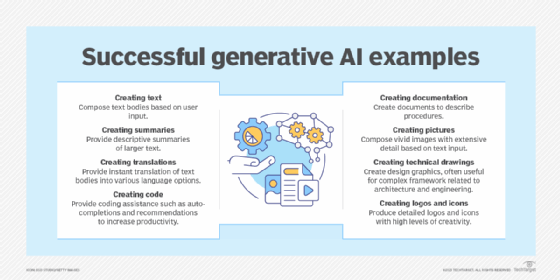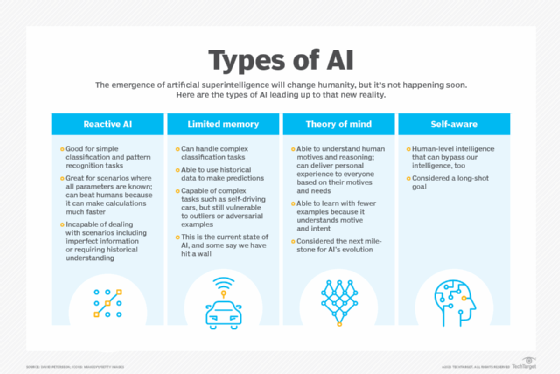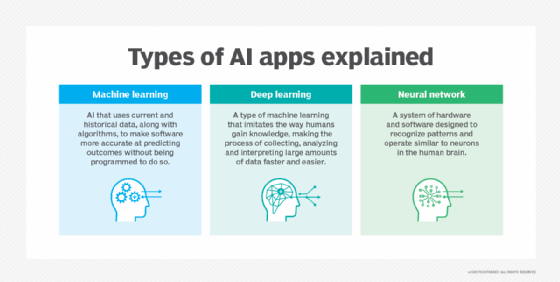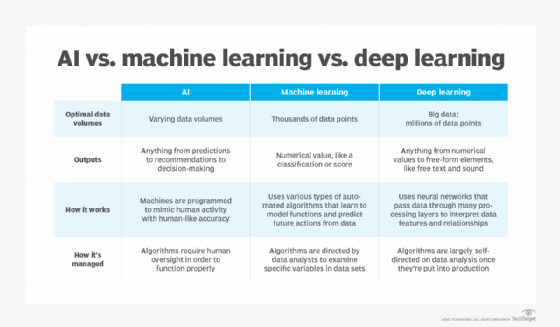Wesco – Wesco announces the appointment of Daniel Castillo to Executive Vice President and General Manager of Electrical and Electronic Solutions
PITTSBURGH, Aug. 25, 2025 /PRNewswire/ — Wesco International (NYSE: WCC), a leading provider of business-to-business distribution, logistics services and supply chain solutions, announced today that effective September 1, 2025, Daniel “Danny” Castillo will assume leadership of its Electrical and Electronic Solutions (EES) strategic business unit.
Mr. Castillo succeeds Nelson Squires who will be retiring on September 30.
Mr. Castillo was formerly executive vice president and president, North America for Brinks, Inc., where he led their secure solutions business in the United States, Canada and Mexico. Prior to that, he served as the executive vice president and president, North America at JELD-WEN, Inc., one of the world’s largest building products manufacturers. He also served as president of Cree Lighting, held business leadership positions at Eaton and Cooper Industries, and started his career with General Electric. Mr. Castillo holds an M.B.A. from Columbia University’s Business School and a B.S. in electrical engineering from Florida International University.
“Danny is joining Wesco and assuming leadership of our EES business at an opportune time. As we recently reported, EES sales increased 6% year-over-year in the second quarter led by strong performance in OEM and Construction, along with a return to growth in Industrial. Our improving business momentum in EES is being driven by increased sales tied to data center and infrastructure projects across the U.S. and Canada. EES is beginning to see benefits from the secular growth trends of electrification, AI-driven data centers, automation and IoT, and reshoring to North America,” said Chairman, President and CEO John Engel.
Mr. Engel continued, “Danny is a terrific addition to our Wesco management team. His successful track record of driving profitable growth will enable our EES business to build on our current positive momentum and deliver industry-leading results.”
Mr. Engel concluded, “I’d like to thank Nelson for his numerous contributions to Wesco over the past ten years and wish him well in his retirement.”
SourceWesco
EMR Analysis
More information on WESCO: See the full profile on EMR Executive Services
More information on Anixter by WESCO: See the full profile on EMR Executive Services
More information on John J. Engel (Chairman, President & Chief Executive Officer, WESCO): See the full profile on EMR Executive Services
More information on Nelson J. Squires III (Executive Vice President & General Manager, Electrical & Electronic Solutions (EES), WESCO till September 30, 2025): See the full profile on EMR Executive Services
More information on Daniel Castillo (Executive Vice President & General Manager, Electrical & Electronic Solutions (EES), WESCO as from September 1, 2025): See the full profile on EMR Executive Services
More information on Brinks, Inc.: https://brinksglobal.com/ + Brink’s is synonymous with integrity, security, and unbeatable service. Utilizing our integrated network of worldwide affiliates, Brink’s Global Services offers secure transport and associated security services in more than 100 countries. With our unsurpassed global footprint, we provide our customers with the highest levels of security service, and accountability in transporting valuable goods around the world.
The Brink’s Company (NYSE:BCO), a leading global provider of cash and valuables management, digital retail solutions, and ATM managed services. Our customers include financial institutions, retailers, government agencies, mints, jewelers and other commercial operations. Our network of operations in 51 countries serves customers in more than 100 countries.
More information on Mark Eubanks (President & Chief Executive Officer, Brinks, Inc.): https://investors.brinks.com/corporate-governance/management + https://www.linkedin.com/in/mark-eubanks-60a0162/
More information on JELD-WEN, Inc.: https://www.jeld-wen.com/en-us + Our founder Richard “Dick” Wendt and partners bought a millwork plant at auction in 1960 and turned JELD-WEN into an industry-leading, global building products organization. We are makers, first and foremost. Makers of high-quality products that deliver on form and function. Makers of a lasting impression on people and the planet.
Headquartered in Charlotte, North Carolina, we operate globally, with manufacturing facilities located primarily in North America and Europe. The company began trading on the New York Stock Exchange in 2017 (NYSE: JELD).
More information on William Christensen (Chief Executive Officer, JELD-WEN, Inc.): https://www.corporate.jeld-wen.com/about-us/our-leadership + https://www.linkedin.com/in/bill-christensen-07123a/
More information on Advanced Lighting Technologies (ADLT): https://www2.adlt.com/ + Advanced Lighting Technologies, LLC (ADLT), starting in 1995, is a market-leading innovator and manufacturer of energy efficient lighting materials and finished products. The Company provides solutions to the growing global movement to decrease energy consumption.
Beginning with advancements in HID (High Intensity Discharge) technology and more recently with the development of LED (Light Emitting Diode) technology, ADLT is focused on highly efficient lighting. ADLT’s global reach extends to Europe, Asia, Australia, New Zealand and Canada. The Company supplies materials to the lighting industries worldwide, sells its own brands in approximately 50 countries and maintains sales, marketing and production facilities around the world.
In addition to its innovation leadership and core focus on ‘green’ lighting products, ADLT holds a low-cost producer status of its Lighting Group to provide competitive pricing. The Company’s Materials Group produces unique metal halide specialty chemicals, ultra high temperature thin film coatings and precision glass optics to create leadership products for a wide range of energy efficient lighting systems.
The opportunities to replace old technology with high performing, state-of-the-art LED technology are key to our strategy of becoming a global leader in lighting. ADLT’s LED and HID lighting systems mesh with our worldwide presence to capitalize on these opportunities.
- Focused on highly efficient, energy saving lighting technologies
- Materials group owns a dominant share of world market in key materials for metal halide technology
- Lighting group supplies materials, components, systems, fixtures and controls with excellent technical and customer support
- Proprietary expertise
Brands of ADLT are:
- Advanced Lighting Technologies
- Cree Lighting Europe
- Holophane
- Venture Lighting
- Arcluce
- Arianna
- PRACHT
- Sol By Sunna Design
- Vicpole
More information on Sabu Krishnan (Chief Executive Officer, Advanced Lighting Technologies (ADLT)): https://adlt.co.nz/blog/adlt-cree-acquisition/
More information on Cree Lighting by Advanced Lighting Technologies (ADLT): https://www.creelighting.com/ + Cree Lighting is an LED lighting pioneer with deep roots and even deeper expertise. In the last two decades, we’ve led by turning innovation into industry-leading solutions, demonstrating our expertise in advanced optical control, color quality, intuitive controls, and proven product quality.
- An industry-leading US-based manufacturer
- 125+ Million LED installed base since 2008
- Nearly 40-Year history in lighting
- Racine, WI headquarters with global locations
- 2,500+ patent portfolio
More information on Sabu Krishnan (Chief Executive Officer, Cree Lighting, Advanced Lighting Technologies (ADLT) + Chief Executive Officer, Advanced Lighting Technologies (ADLT)): https://www.linkedin.com/in/gregg-lowe-06918814/
More information on Eaton: See full profile on EMR Executive Services
More information on Paulo Ruiz Sternadt (Chief Executive Officer, Eaton): See the full profile on EMR Executive Services
More information on Signify: See the full profile on EMR Executive Services
More information on Željko Kosanović (Member of the Board + Chief Financial Officer + Senior Vice President, Group Controller, Signify + Interim Chief Executive Officer, Signify till September 1st, 2025): See the full profile on EMR Executive Services
More information on As Tempelman (Chief Executive Officer, Eneco till September 1st, 2025 + Member of the Board + Chief Executive Officer, Signify as from September 1st, 2025): See the full profile on EMR Executive Services
More information on Cooper Lighting by Signify: https://www.cooperlighting.com/ + At Cooper Lighting Solutions, we build forward-thinking lighting solutions that make people’s lives safer, while making buildings, homes and cities smarter and more sustainable. We deliver an industry-leading portfolio of indoor and outdoor lighting, lighting controls and smart lighting systems.
We question, we seek and we solve. Because building a better world means asking tough questions and pushing harder for answers. Together with our customers, we create solutions that build a better world. At Cooper Lighting Solutions, we push past the ordinary to build brighter.
Cooper Lighting Solutions is a business unit of Signify, the world leader in lighting. Together we have a shared purpose to unlock the extraordinary potential of light for brighter lives and a better world.
More information on Kraig Kasler (President, Cooper Lighting Solutions, Signify): See the full profile on EMR Executive Services
More information on GE: https://www.ge.com + General Electric Company (General Electric, GE or the Company) is a high-tech industrial company that today operates worldwide through three segments: Aerospace, Renewable Energy, and Power. Our products include commercial and military aircraft engines and systems; wind and other renewable energy generation equipment and grid solutions; and gas, steam, nuclear and other power generation equipment. We have significant global installed bases of equipment across these sectors, and services to support these products are also an important part of our business alongside new equipment sales.
In November 2021, we announced a strategic plan to form three industry-leading, global, investment-grade public companies from (i) our Aerospace business, (ii) our Renewable Energy, Power, Digital and Energy Financial Services businesses, which we plan to combine and refer to as GE Vernova, and (iii) our former HealthCare business. In July 2022, we announced the new brand names for our three planned future companies: GE Aerospace, GE HealthCare and GE Vernova. For purposes of this report, we refer to our reporting segments as Aerospace (previously Aviation), HealthCare (previously Healthcare), Renewable Energy and Power. The composition of these reporting segments is unchanged. On January 3, 2023, we completed the separation of the HealthCare business from GE through the spin-off of GE HealthCare Technologies Inc. (GE HealthCare). In the spin-off, GE made a pro-rata distribution of approximately 80.1% of the shares of GE HealthCare’s common stock to GE shareholders, retaining approximately 19.9% of GE HealthCare common stock. This spin-off marked the culmination of our first business separation in accordance with the November 2021 strategic plan, and we are working toward the planned spin-off of GE Vernova.
Total Revenue for FY 2023: US$ 68.0bn at +17%
More information on H. Lawrence (Larry) Culp, Jr. (Chairman and Chief Executive Officer, GE + Chief Executive Officer, GE Aerospace): https://www.ge.com/about-us/leadership/profiles/lawrence-culp + https://www.linkedin.com/in/larry-culp/
EMR Additional Notes:
- OEM (Original Equipment Manufacturer):
- Company that produces parts and equipment that may be marketed by another manufacturer.
- Usually tagged on hardware or software that’s less expensive than normal retail products.
- An OEM refers to something made specifically for the original product, while the aftermarket refers to equipment made by another company that a consumer may use as a replacement.
- Electrical OEM manufacturers makes equipment or components that are then utilized by its customer, another manufacturer or a reseller, usually under the final reseller’s brand name. OEMs come in many shapes and sizes, making complete devices or specific components.
- MRO (Maintenance, Repair and Operations):
- It refers to all the activities needed to keep a company’s facilities and production processes running smoothly.
- Supplies consumed in the production process that do not become part of the end product.
- Maintenance professionals use MRO items to maintain company structures, equipment, and assets. Purchases that fall under MRO include maintenance tools and equipment, replacement parts for production equipment, consumables such as personal protective equipment (e.g., safety goggles, work gloves), cleaning products and office supplies.
- Integrated Supply:
- Integrated supply chain management refers to an enterprise resource planning approach to supply chain management.
- Large-scale business strategy that brings as many links of the chain as possible into a closer working relationship with each other. The goal is to improve response time, production time, and reduce costs and waste.
- Often takes the form of integrated computer systems. For example, the supplier’s computer system may be set up to deliver real-time data to the buyer’s computer. This allows the buyer to know: The current status of all orders., which products are in the supplier’s inventory …
- Integration, operations, purchasing and distribution are the four elements of the supply chain that work together to establish a path to competition that is both cost-effective and competitive.
- Integrated supply is the end-to-end process of managing the MRO supply chain (spare parts) through consolidated sourcing practices, storeroom operations, inventory management, data governance, and continuous improvement. The objective is to leverage spend, reduce transactions, and cut inventory and associated costs while eliminating risk around critical spares.
- AI – Artificial Intelligence:
- Artificial intelligence is the simulation of human intelligence processes by machines, especially computer systems.
- As the hype around AI has accelerated, vendors have been scrambling to promote how their products and services use AI. Often what they refer to as AI is simply one component of AI, such as machine learning. AI requires a foundation of specialized hardware and software for writing and training machine learning algorithms. No one programming language is synonymous with AI, but well a few, including Python, R and Java, are popular.
- In general, AI systems work by ingesting large amounts of labeled training data, analyzing the data for correlations and patterns, and using these patterns to make predictions about future states. In this way, a chatbot that is fed examples of text chats can learn to produce lifelike exchanges with people, or an image recognition tool can learn to identify and describe objects in images by reviewing millions of examples.
- AI programming focuses on three cognitive skills: learning, reasoning and self-correction.
- The 4 types of artificial intelligence?
- Type 1: Reactive machines. These AI systems have no memory and are task specific. An example is Deep Blue, the IBM chess program that beat Garry Kasparov in the 1990s. Deep Blue can identify pieces on the chessboard and make predictions, but because it has no memory, it cannot use past experiences to inform future ones.
- Type 2: Limited memory. These AI systems have memory, so they can use past experiences to inform future decisions. Some of the decision-making functions in self-driving cars are designed this way.
- Type 3: Theory of mind. Theory of mind is a psychology term. When applied to AI, it means that the system would have the social intelligence to understand emotions. This type of AI will be able to infer human intentions and predict behavior, a necessary skill for AI systems to become integral members of human teams.
- Type 4: Self-awareness. In this category, AI systems have a sense of self, which gives them consciousness. Machines with self-awareness understand their own current state. This type of AI does not yet exist.
- Machine Learning (ML):
- Developed to mimic human intelligence, it lets the machines learn independently by ingesting vast amounts of data, statistics formulas and detecting patterns.
- ML allows software applications to become more accurate at predicting outcomes without being explicitly programmed to do so.
- ML algorithms use historical data as input to predict new output values.
- Recommendation engines are a common use case for ML. Other uses include fraud detection, spam filtering, business process automation (BPA) and predictive maintenance.
- Classical ML is often categorized by how an algorithm learns to become more accurate in its predictions. There are four basic approaches: supervised learning, unsupervised learning, semi-supervised learning and reinforcement learning.
- Deep Learning (DL):
- Subset of machine learning, Deep Learning enabled much smarter results than were originally possible with ML. Face recognition is a good example.
- DL makes use of layers of information processing, each gradually learning more and more complex representations of data. The early layers may learn about colors, the next ones about shapes, the following about combinations of those shapes, and finally actual objects. DL demonstrated a breakthrough in object recognition.
- DL is currently the most sophisticated AI architecture we have developed.
- Computer Vision (CV):
- Computer vision is a field of artificial intelligence that enables computers and systems to derive meaningful information from digital images, videos and other visual inputs — and take actions or make recommendations based on that information.
- The most well-known case of this today is Google’s Translate, which can take an image of anything — from menus to signboards — and convert it into text that the program then translates into the user’s native language.
- Machine Vision (MV):
- Machine Vision is the ability of a computer to see; it employs one or more video cameras, analog-to-digital conversion and digital signal processing. The resulting data goes to a computer or robot controller. Machine Vision is similar in complexity to Voice Recognition.
- MV uses the latest AI technologies to give industrial equipment the ability to see and analyze tasks in smart manufacturing, quality control, and worker safety.
- Computer Vision systems can gain valuable information from images, videos, and other visuals, whereas Machine Vision systems rely on the image captured by the system’s camera. Another difference is that Computer Vision systems are commonly used to extract and use as much data as possible about an object.
- Generative AI (GenAI):
- Generative AI technology generates outputs based on some kind of input – often a prompt supplied by a person. Some GenAI tools work in one medium, such as turning text inputs into text outputs, for example. With the public release of ChatGPT in late November 2022, the world at large was introduced to an AI app capable of creating text that sounded more authentic and less artificial than any previous generation of computer-crafted text.




- Edge AI Technology:
- Edge artificial intelligence refers to the deployment of AI algorithms and AI models directly on local edge devices such as sensors or Internet of Things (IoT) devices, which enables real-time data processing and analysis without constant reliance on cloud infrastructure.
- Simply stated, edge AI, or “AI on the edge“, refers to the combination of edge computing and artificial intelligence to execute machine learning tasks directly on interconnected edge devices. Edge computing allows for data to be stored close to the device location, and AI algorithms enable the data to be processed right on the network edge, with or without an internet connection. This facilitates the processing of data within milliseconds, providing real-time feedback.
- Self-driving cars, wearable devices, security cameras, and smart home appliances are among the technologies that leverage edge AI capabilities to promptly deliver users with real-time information when it is most essential.
- Multimodal Intelligence and Agents:
- Subset of artificial intelligence that integrates information from various modalities, such as text, images, audio, and video, to build more accurate and comprehensive AI models.
- Multimodal capabilities allows to interact with users in a more natural and intuitive way. It can see, hear and speak, which means that users can provide input and receive responses in a variety of ways.
- An AI agent is a computational entity designed to act independently. It performs specific tasks autonomously by making decisions based on its environment, inputs, and a predefined goal. What separates an AI agent from an AI model is the ability to act. There are many different kinds of agents such as reactive agents and proactive agents. Agents can also act in fixed and dynamic environments. Additionally, more sophisticated applications of agents involve utilizing agents to handle data in various formats, known as multimodal agents and deploying multiple agents to tackle complex problems.
- Small Language Models (SLM) and Large Language Models (LLM):
- Small language models (SLMs) are artificial intelligence (AI) models capable of processing, understanding and generating natural language content. As their name implies, SLMs are smaller in scale and scope than large language models (LLMs).
- LLM means large language model—a type of machine learning/deep learning model that can perform a variety of natural language processing (NLP) and analysis tasks, including translating, classifying, and generating text; answering questions in a conversational manner; and identifying data patterns.
- For example, virtual assistants like Siri, Alexa, or Google Assistant use LLMs to process natural language queries and provide useful information or execute tasks such as setting reminders or controlling smart home devices.
- Agentic AI:
- Agentic AI is an artificial intelligence system that can accomplish a specific goal with limited supervision. It consists of AI agents—machine learning models that mimic human decision-making to solve problems in real time. In a multiagent system, each agent performs a specific subtask required to reach the goal and their efforts are coordinated through AI orchestration.
- Unlike traditional AI models, which operate within predefined constraints and require human intervention, agentic AI exhibits autonomy, goal-driven behavior and adaptability. The term “agentic” refers to these models’ agency, or, their capacity to act independently and purposefully.
- Agentic AI builds on generative AI (gen AI) techniques by using large language models (LLMs) to function in dynamic environments. While generative models focus on creating content based on learned patterns, agentic AI extends this capability by applying generative outputs toward specific goals.
- High-Density AI:
- High-density AI refers to the concentration of AI computing power and storage within a compact physical space, often found in specialized data centers. This approach allows for increased computational capacity, faster training times, and the ability to handle complex simulations that would be impossible with traditional infrastructure.


